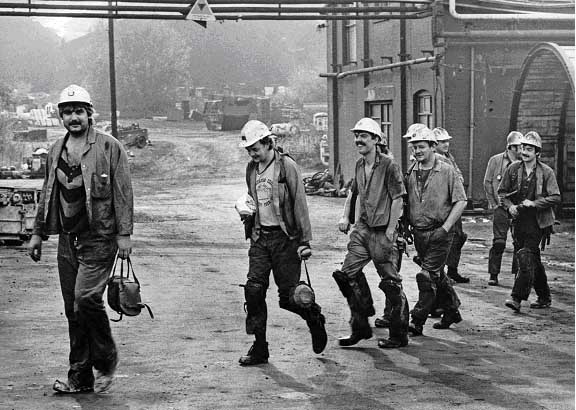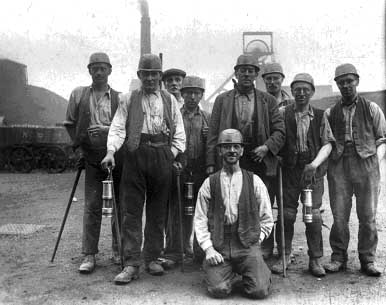
It might be that
coal is becoming a fading memory to those who lived through the trials and tribulations of the past fifty or more years and present generations might find it hard to imagine a time when it was relied upon to provide heating, energy and a means of travel. It cannot be denied that coal has left an indelible mark on Yorkshire’s long industrial history and its final glory years are aptly portrayed in Yorkshire People and Coal.”
www.amberleybooks.com
£ 12.99
Amberley Publishing
The Hill, Stroud
Gloucestershire GL5 4EP
P E T E R T U F F R E Y
YORKSHIRE
PEOPLE & COAL
FROM THE PICTURE ARCHIVES
£12.99
www.amberleybooks.com
ISBN 978 14456 05166

As a photo historian Peter Tuffrey hit something of a rich seam when he gained permission from The Yorkshire Post to publish collections from their extensive and dynamic photo archive. Shooting fish in a barrel comes to mind; certainly his greatest task must have been narrowing down the huge volume of photos into a comprehensive spread of the last fifty years he covers in this book.

The last shift at Cortonwood, 25 Oct 1985 after eight tenths of the entire British mining workforce nationwide had stood out in the most dire of conditions and repression for 12 bitter months of resistance to its closure. Cortonwood decided to accept closure after loosing the strike and then being told they would loose out on thousands of pounds ‘enhanced redundancy’ if they took the closure through the appeal procedure. Blackmail of the worse kind.
This is the third in his Yorkshire People collection; the other two were Yorkshire People and Railways, and Yorkshire People At Work.

Handsworth ,Sheffield, 27 Oct 1967 The Branch Secretary Tommy Walker wishes good luck to the last afternoon shift at the closing colliery, of the 300 men still working at the pit most are being transferred to other collieries in the district, mainly Treeton and Orgreave. The pit was one of the few in the country to close because the seam was actually exhausted.
As ‘the National newspaper of Yorkshire’ and rooted in the heart of Britain’s biggest coalfield the paper has been unique really in chronicling the life ,and frequently the deaths in the vast Yorkshire coalfield communities of the last half century. Their archive records disasters and scenes from the pitheads, victims and rescuers, perhaps the only time the paper had any sympathy for the us. By contrast their excellent photo coverage of the strikes and pickets since the sixties through to our most testing period in the 1980s and final stand in the early nineties, their actual commentary stank to high heaven. Yorkshire Post was the right wing voice of middle class Yorkshire rooted not in industry but in the rural Tory heartlands. Scargill was continually at war with them and few if any pit families ever bought it anyway. Fortunately Peter doesn’t borrow much of anything from their commentary on the photos he presents.

Disaster at Houghton Main, Barnsley, 6-50pm June 1975 five men were killed and one sustained serious injury following an explosion in the Meltonfield seam. Miners’ wives sat covered in blankets waiting for news of their loved ones, as they had done in pit disasters for centuries. Two men caught in the outer limits of the explosion miraculously walked out unscathed. The photo shows rescue teams recovering the bodies of the men amid harrowing scenes of relatives being told the devastating news.
There are some excellent, evocative photo’s here, well chosen many of them haunting or powerful, none of them pretty or scenic.

Barnsley Main, an undated though early photo of a group of deputies. The pit had been sunk in 1838 by the Barnsley Main Coal Company. Originally axed in May 1966 under the huge Robens closure programme, the pits reserves were taken over by Barrow Colliery. 450 of its men were transferred to that pit. It reopened in 1985 as part of new investment in Barnsley area coalfield reconstruction at a cost of £25m but was abandoned during the last terminal round of closures under John Major in July 1991.
The headgear, and heap and winding engine house were retained in situ as a monument to Barnsley’s coal industry which had been the very soul of the town and its population and for which they had fought so hard to retain. One suspects those reserves which were planned for development is still down there.
In the nicest possible way I find the book sad, sad to the point of tears. Is it just a nostalgic sigh grieving for all that’s past? I think anyone who looks through this book and dwells on the scenes of mass struggle, victory, confidence, alongside the horror of disaster and loss and injury, as well as god almighty heroism in strikes and disaster can afford us that. Aye its who we were, any of these photo’s of smiling, ‘pillicking’ piss taking miners ascending the shafts fighting the earth or arm in arm rank on rank facing down the mass ranks of armoured guardians of property and power, could be us and our mates. The book records certainly what and who we were, and sadly what we and our communities and union are no more. The book will stir mixed emotions but is certainly a credit to Peter, who correctly in my view regards the period and scenes covered in his book as the most eventful and important in mining’s long history.
David Douglass